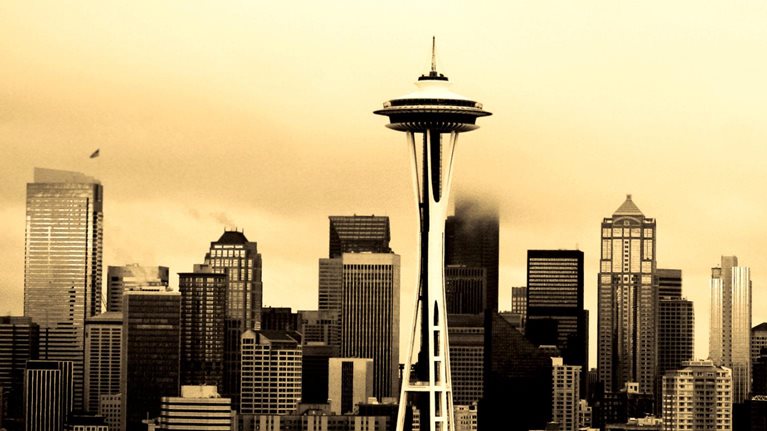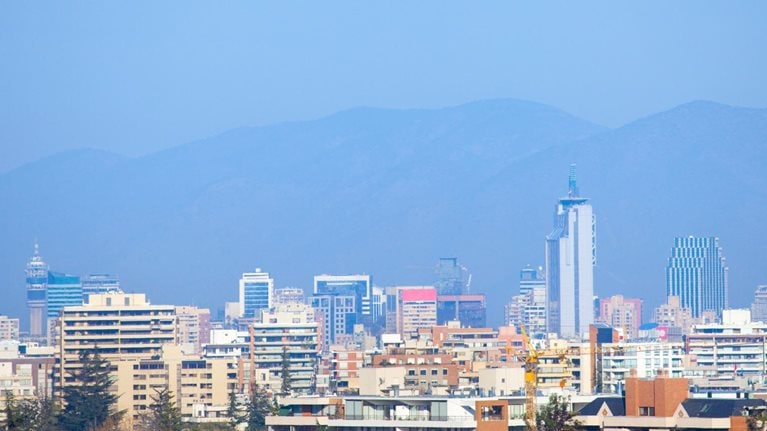Forget the Big Apple or La La Land. It's Tampa, Phoenix, (and a couple hundred smaller US cities) that are going to power the new US economy.
There's a cliché that young Americans head to the bright lights of the big cities to find their fame and fortune. It's still true, except that those cities aren't necessarily just the big ones anymore. And let's be thankful for that, because it's the US mid-tier cities that are surprisingly generating the growth that will spur the global economy over the next decade.
Collectively, large cities—which we define as metropolitan areas with a population of 150,000 plus—in the United States are the center of gravity of the economy, generating almost 85 percent of US gross domestic product (GDP) and nearly 20 percent of global GDP today. While New York and Los Angeles, the two American megacities with populations of more than ten million, have continued to tower above all others among the 259 large US metropolitan areas, it's the 257 "middleweight" cities—with populations of between 150,000 and 10 million—that generate more than 70 percent of US GDP today. The top 28 middleweights alone account for more than 35 percent of the nation's GDP.
It is America's large cities, and particularly the broad swath of middleweights, that will be the key to the US recovery and a key contributor to global growth in the next 15 years. Large cities in the United States will contribute more to global growth than the large cities of all other developed countries combined. We expect the collective GDP of these large US cities to rise by almost $5.7 trillion—generating more than 10 percent of global GDP growth—by 2025. While New York and Los Angeles together are expected to grow at a compound annual rate of 2.1 percent between 2010 and 2025, the top 30 middleweights (measured by GDP) are expected to outpace them with a growth rate of 2.6 percent.
What is behind the clout of middleweights in the United States? For a start, there are simply more of them than in other developed regions. Of more than 600 middleweight cities around the developed world, the United States is home to 257 of them. East Asia (Japan and South Korea) has 123 and Western Europe 183, both regions with GDP levels comparable to the United States. But it's not just that the United States has more middleweights than other developed regions—its middleweights also have relatively high per capita GDP. Taking both their number and their relative prosperity into account, US middleweights generate a much higher share of the country's total GDP—more than 70 percent—than those, say, in Western Europe, where they contribute just over 50 percent.
It is the dynamism of American middleweights that is behind their collective strength; but it is the diversity of their performance—not the similarity—that is striking.
Although New York, Los Angeles, and Chicago maintained their top three positions between 1978 and 2010, many middleweights among the top 30 cities measured by GDP have undergone considerable change. Five cities dropped out—New Orleans, Louisiana; Milwaukee, Wisconsin; Columbus, Ohio; Indianapolis, Indiana; and Buffalo, New York—and were replaced by Riverside, California; Portland, Oregon; Tampa and Orlando in Florida; and Sacramento, California. Within the top 30 there are changes as well: Cleveland, Ohio, for instance, dropped from 17th place to 27th, while Phoenix, Arizona, rose by 15 places, from 28th to 13th.
Overall, differences in population growth explain the most as to why some cities have grown faster than others, rather than differences in per capita GDP growth. Cities that have achieved the strongest economic growth have expanded their populations by two and a half times the rate of the national average. While slowing population growth and mobility will make it harder for US cities to sustain rapid population growth rates, cities that want to grow their GDP will need to pay attention to attracting and supporting expanding populations. Many observers argue that it is the mix of local industries in a city that determines its ability to grow. This is true—but to a much lesser extent than often assumed. Our analysis suggests that the mix of sectors explains only about one-third of the above-average growth of America's most rapidly growing cities.
Even when narrowing our focus to the strongest performing cities, again there is no single path to success—no unique blueprint that all urban leaders should pursue. The cities that outperform their peers simply find ways to make the most of the economic opportunities they face, get lucky, or both. Some cities have been able to reinvent themselves; many others make the most of their endowments or their location.
Rapidly growing "gazelles" such as Austin, Texas, and Raleigh, North Carolina, have outperformed the US average in both per capita GDP and population growth by building on their high-tech presence and strong collaboration with local universities. Other cities such as Dallas, Texas, and Atlanta, Georgia — which we might call "affordable metropolises"—have outperformed the average national GDP growth because their populations have expanded rapidly (despite per capita GDP growth that was slower than average). These affordable metropolises have managed to offer their citizens a good quality of life at a reasonable price by containing housing costs, for instance. Another set of large, established cities such as Boston, Massachusetts, and Washington, D.C.—"alpha middleweights"—outperform others with significantly above-average per capita GDP and sustain moderate growth by leveraging the strength of their existing economic base.
Given this diversity, the key for urban policy makers is to understand their cities' potential and shortcomings so that they can tailor their growth strategy accordingly. Over the past year, Chicago—a city that, if it were a nation, would have the 20th largest economy in the world—has undertaken a major effort to compile a fact-based profile of its strengths and weaknesses amid concern that the city's growth has been slowing for the past ten years. Other US cities could emulate Toronto, whose Board of Trade issues an annual report that tracks the city against 24 global metropolitan areas.
Cities need to have a keen ear for what businesses are looking for. Many cities and states across the United States already work hard to attract new businesses. But the competition is intense, not only from emerging markets that have the advantage of lower wages, but also from developed markets where governments are feeling the pressure to do something, to be more proactive in boosting competitiveness and growth. For decades now, Ireland and Singapore have set the bar with their high-performing investment agencies that proactively pursue attractive business opportunities—"making things happen for investors" to borrow the motto of Singapore's Economic Development Board.
The coming years are not going to be easy. As households and the government pay down debts built up before and during the recession, growth could be dampened for many years. Cities that have experienced real estate booms and busts will find recovery particularly hard going. In Orlando and Phoenix more than half of mortgage holders are in negative equity. In Las Vegas, it's two out of three. And there are still pockets of stubbornly high unemployment—two-thirds of all the jobs lost during the downturn were in states that accounted for only 45 percent of the US population.
In the longer-term, cities will find it far harder to grow their GDP simply by expanding their populations. The nation's overall population is growing at a slower pace, but aging rapidly. Today, seniors outnumber children in only one of every 20 cities but, by 2025, one-third of cities will have more seniors than children. More worrisome, this demographic trend comes at a time when the mobility of labor, a traditional strength of the US economy, is weakening as the share of young, mobile workers is declining and the share of less mobile dual-income households is increasing. This means that competition for skills is going to be a major issue. Recent MGI analysis has found that there could be a shortage of up to 1.5 million workers with bachelor's degrees or higher in 2020, while nearly 6 million Americans without a high school diploma are likely to be without a job. Cities with a substantial pool of young and technically educated workers will have the advantage.
The recession has left cities at very different starting positions to cope with future trends. There is little doubt that large shifts in the US and global economy have—and will continue to have—a significant impact. The decline of the Iron Belt into the Rust Belt across the middle of the United States as a result of the decline in heavy manufacturing; and the rise of the Sun Belt states are but one illustration of the differing fortunes. But geography is not destiny: There are solutions for both Detroit and Phoenix, for example, to rebuild their economies and continue on the path to GDP growth—even though the right solutions for each share few similarities.
But the landscape is moving. For example, the shift in the global economic balance to rising emerging nations favors urban centers that are well connected to global growth hubs. Cities with airport hubs and ports, business connections (such as electronics value chains), or personal connections (with universities that attract foreign students) will be in a better position to take advantage of the growing emerging market opportunity.
In this evolving economic picture, the middleweights of urban America need once again to demonstrate their resilience, flexibility, and capacity for reinvention.
“Urban America: U.S. cities in the global economy” was published on April 17 and is available for download at www.mckinsey.com/mgi.
This article originally ran in Foreign Policy.


